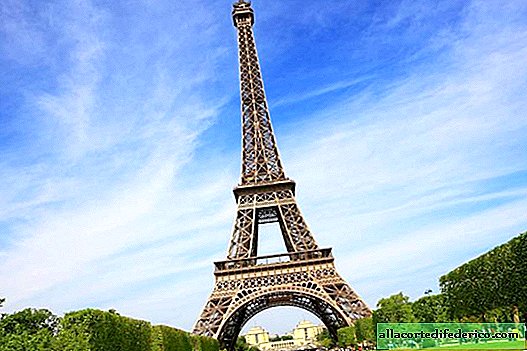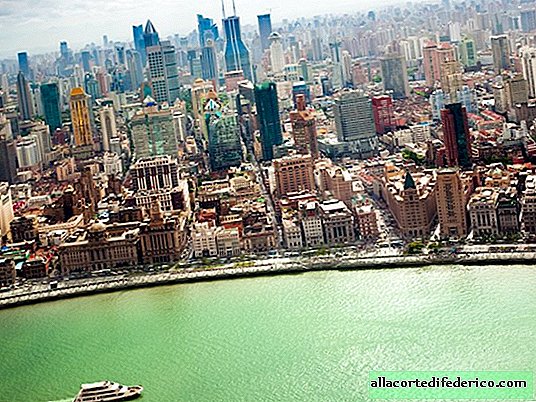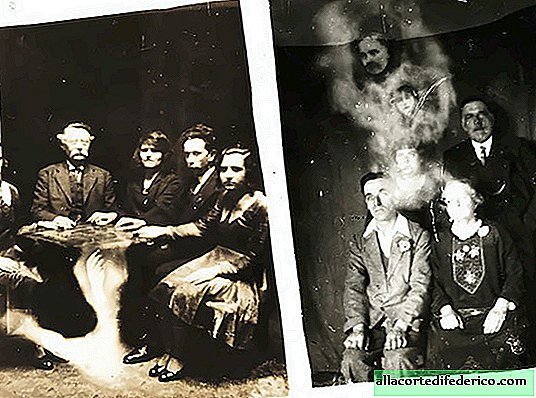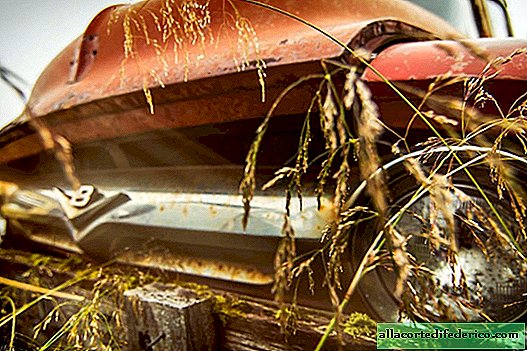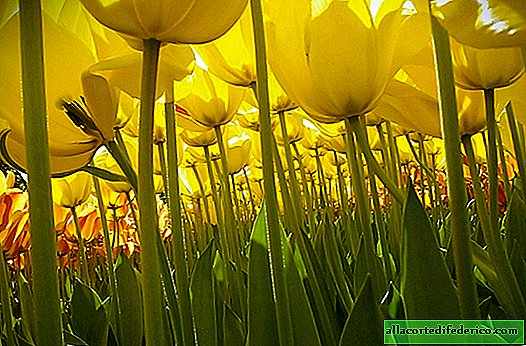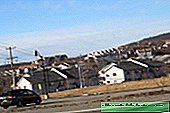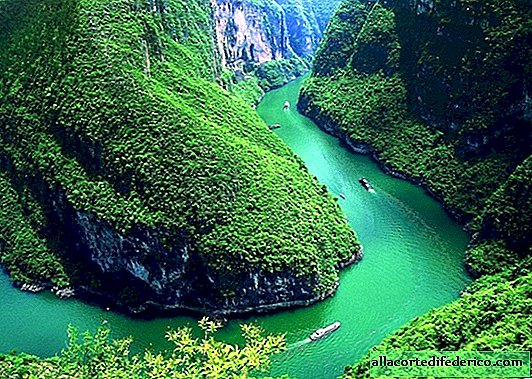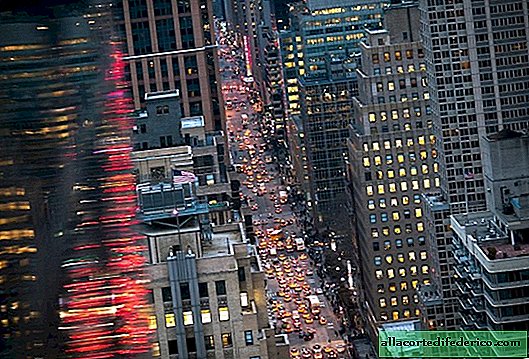Dialogue with nature: Hundertwasser biomorphic house in Vienna
Conservative residents of Vienna consider this house a tasteless avant-garde kitsch, while others, on the contrary, admire the genius and courage of the architect Hundertwasser, who embodied among the classical residential buildings their ideas about environmental friendliness and the inalienable human right to individuality, rejection of imposed norms and freedom of expression.
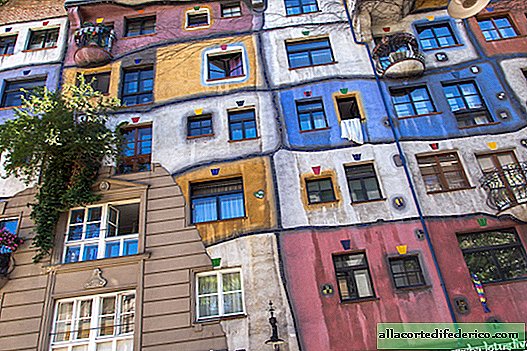
A multi-colored house overgrown with trees with columns and windows of different sizes at different heights within one floor is perceived as an absolutely foreign element in a quiet III district of the capital of Austria. How could the city authorities give permission to the innovative architect, whose principles to this day have not been widely adopted and applied in the construction and creation of a comfortable living environment that meets the needs of an individual person? Hundertwasser’s biomorphic house can’t even be called traditional eco-construction, where instead of a couple of apartments they decided to organize open terraces with gardens, and solar panels were installed on the roof to save electricity. His authentic vision of the interaction of man and nature within the urban environment is often referred to as the "biotech" style, characterized by the embodiment of natural forms in an initially angular and rational architecture, but the Austrian looked much deeper.
“First of all, it is necessary to abandon a whole set of rules. These rules, laws and regulations, created at other times in different conditions for the benefit and for the protection of people, are now directed in the light of new requirements and restrictions against the environment and humans. Without the environment, suitable for the needs of man, and without harmony with nature, our existence is simply impossible. Peaceful interaction with nature should begin in the near future, before it is too late. With authoritarian control and self-discipline, it can work for some time. eating more or less how it can end, but then the body and soul will protest, and we won’t find out why. This house is created to serve as the first attempt to dialogue with nature, a dialogue in which we and nature are equal partners; one side does not holds the lead over the second. "

Friedensreich Hundertwasser (real name Friedrich Stowasser), son of an Austrian and Jewish woman, was born in Vienna in 1928 and began his career as a painter. However, since the 1950s, he has been fascinated by architecture, which has resulted in several publicly read and published essays and manifestos, including the rustling “Moldy Manifesto Against Rationalism in Architecture”. In 1972, on the television show "Make a Wish," Hundertwasser first presented his models of low-rise buildings with external terraces.

Photo: hundertwasser-haus.info
In late 1977, the Austrian Federal Chancellor, in a letter to the mayor of Vienna, Leopold Gratz, proposed allowing Hundertwasser to realize his ideas in the field of architecture and allowing him to design and build a residential building. The development of the concept took several years, and since Hundertwasser was not a certified architect, he turned to the city council with a request to find a professional who would be interested in transferring his sketch ideas to the format of drawings and technical documentation. The authorities of Vienna attracted Joseph Kravina, later he was replaced by Peter Pelikan, which resulted in a long cooperation in subsequent projects.

Photo: Friedensreich Hundertwasser and Vienna Mayor Leopold Gratz at the presentation of the model house (hundertwasser-haus.info)
“The outer walls of modern buildings are the walls of our prisons, they are faceless, emotionless, aggressive, heartless, cold and empty to boredom. These are the characteristics of prison walls that suppress human freedom, which crowded the inhabitants of concentration camps ... Architects are now building prison cells where human soul Today we are witnessing the triumph of rational technology and at the same time we are faced with an empty emptiness. Aesthetic emptiness, desert of uniformity, deadly sterility and reativnaya impotence ".

Each "house inside the house", that is, individual apartments, on the facade has its own color, made with the help of colored finishing plaster. Dark gray borders are blurred and smoothed as much as possible, which allows you to achieve a smooth transition and abandon straight lines. In his manifestos, Hundertwasser, in addition to the concept of “tree obligation”, introduced the term “window right”. Not only that, according to the project, the windows were located at different heights and had different styles and sizes, to this day tenants are allowed to stretch out of the window and decorate the facade at their discretion. Imagine this possible in our country, where even the battles are unfolding for the color of double-glazed windows on non-historic buildings?
"A man in a rented apartment should be able to lean out of the window and scrape the masonry as far as he can reach. He should be allowed to take a long brush and paint something on the facade, so that it can be seen from afar from the street. So that passers-by understand that outside the window an ordinary person, and different from his captive, enslaved and standardized neighbors. "

"Some people say that houses consist of walls. I would say that houses consist of windows. When different buildings line up one after another on the street, when everyone has a different style of windows, that is, they belong to different races, for example, a house in Art Nouveau style with Art Nouveau windows is adjacent to the modern building and its inconspicuous square windows, and then there is a Baroque house with Baroque windows, it doesn’t matter to everyone, and if all three types of windows could be seen on one building ? This would be regarded as a violation of the racial division of windows. Why? Each window has its own right to life. Repeating identical windows one after another in a line and one above the other, as in a grid, is a feature of concentration camps. Windows burdened with a clear position and order are sad, and they would like to dance. "

However, if you look closely, radically no one uses this freedom. Near the windows you will not see inscriptions, graffiti or home-made bas-reliefs. Complete freedom was also given regarding the interiors. Unfortunately, one cannot get inside the house or even appreciate the design of the porches. Perhaps, something has changed since the end of construction, in February 1986, but initially the mosaics on the walls, stairs and corridors and even inside the apartments tiles in the kitchens and bathrooms were laid randomly, not adhering to the mesh structure.
"Analyzing the new architectural trends in the construction of satellite towns and new administrative buildings, banks, hospitals and schools, I want to say that aligning windows on one line is unbearable. All people are completely different and are protected from imposed standardization in a passive or active way, depending on their constitution Either through alcohol or addiction to drugs, fleeing out of town, obsession with cleaning and cleanliness, dependence on television, unexplained complaints about physical condition, allergies, depression, or even trying homicide, or in alternative ways - aggression, vandalism and crime. "

Hundertwasser actively promoted the idea of perceiving a home as an integral part of a person, comparing it with a third layer of skin. Tired of imposed fashion and trends, a person in modern society at any time can easily change their hair, get a tattoo, buy new clothes and change their style of mood. A person can get tired of jammed wallpaper and a beloved sofa and start a major overhaul. However, the average layman rarely can afford to move from an anthill to a suburban townhouse, built on an individually designed project.
"A person has three layers of skin: his own, his clothes and his home. All three layers must regenerate, grow and change. However, when the third layer, that is, the outer wall of the house, does not change and does not grow like the first layer, this layer dying off. "

What percentage of people at least somehow identifies with their home, is proud that he lives in this place? In St. Petersburg, for example, perhaps only a resident of former apartment buildings, where old fireplaces, stucco moldings, stained-glass windows and caryatids propping up, have experienced such feelings. But not the inhabitants of sleeping areas with typical buildings.
"Of fundamental importance is the individual organic design of the exterior wall of the building for each apartment, so that its owner identifies himself with his house already outside. My apartment exterior design that does not meet the general standards is not protected from changes like historical monuments, but it should be regarded as a harbinger" window freedom "of each individual."

"If, for example, vertical drips from the rain or streaks of rust, or even dirty spots enliven the facade or create some kind of shape on it, all such improvements are welcome. Many homeless people slept inside the house, anonymous" artists "scratched and stained the walls with dirt. Traces of such illegal actions have the right to remain, as well as nests of swallows and other birds, trees and grass growing in those places where it was not originally planned. Handprints of masons on wet plaster should be left, like any other decor someone had once left some nice details on the facade of the house or inside it. "

After the house was rented out, residents were not allowed to immediately settle in, so that they would not interfere with the natural growth of plants and shrubs on organized terraces. Throughout the year, trees, bushes, grass and the house became one. To create 14 large terraces and many small gardens, it was necessary to raise 900 tons of land to a building with a hilly number of storeys. Hundertwasser believed that from a bird's eye view the house should remain invisible under the crowns of trees.
“The hanging gardens of Babylon, Babylon, most likely were terraces with green spaces. Terraces, not hidden in the backyard, but facing the streets - a gift for all people, not only for those who live behind their protective layer, but also for those who may never climb them. External terraces erase the vertical aggressiveness of buildings, reduce street noise, because the echo no longer spreads between the rows of buildings. If trees grow on the terraces, the house resembles a natural hill on which people live. Walk around the city from open terraces on the facades of buildings may well be compared with wandering in a green valley. "

Hundertwasser House after completion of construction was widely covered in the international press and received many polar reviews. And today, while some call it a green oasis among classical municipal buildings, others do not hesitate in unflattering terms, considering the "bio-castle" a terrible and disgusting structure that violates the harmonious appearance of the district. Nevertheless, the building is extremely attractive for tourists.

A few years later, for them, on the contrary, in the premises of the former factory for the production of car tires, they opened the "Hundertwasser Village" - a small trade and exhibition complex with bars, cafeterias and souvenir shops.

Assume how the tiles decorated the apartment at home, allows the stairs leading to the toilet. Entrance there is paid, but the overall style can be understood from the hall. Due to the use of mosaics and broken tiles, Hundertwasser is often compared to Antonio Gaudi.

Genius or crazy? Some ideas of Friedensreich Hundertwasser and after 30 years look utopian. Not just setting up a garden or square near the house, but actually making trees your neighbors. Allow residents to paint facades. It is hard to imagine that such principles will ever be adopted globally. After all, it is much cheaper and easier to erect residential box buildings for basic projects, to sell standard apartments to standardized inhabitants.
"Sterile cleanliness, the policy of regulation and leveling, forced uniformity and monoculture in all manifestations bring not only death to all forms of life, but also are a symptom of the degradation of our civilization."

The Austrian rebel architect did not stop at home in Vienna’s III district. It’s worth a trip to look at the exterior of the Spittelau incinerator in the north of the city.

